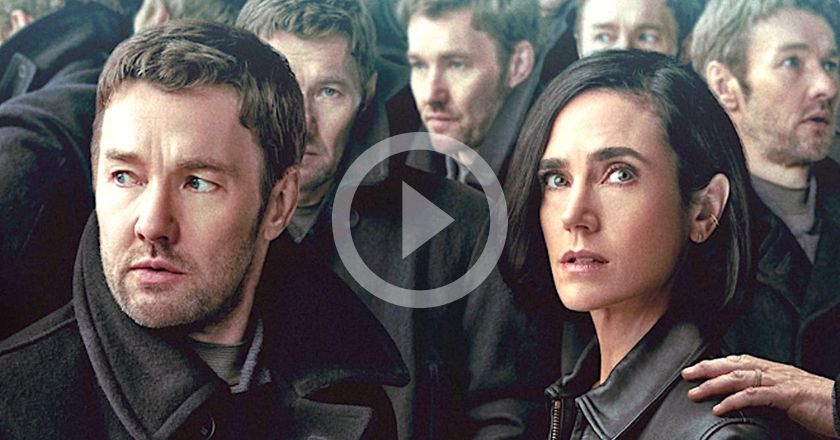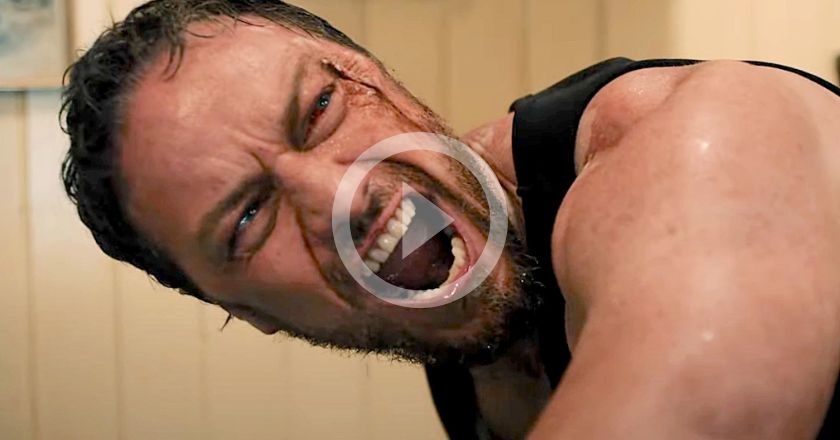Hunger is a strange silence…

Back in 2009 a Tasmanian actor-turned-filmmaker made good on his promise to bring to the big screen one of Australia’s darkest tales of misadventure. A tale so grim, that even when the man at its centre retold it no one believed him. That man was Alexander Pearce, the yarn was his escape from Hells Gates, the filmmaker was Jonathan auf der Heide, and the movie was Van Diemen’s Land.
Why is it so grim? Why is it a big deal? Van Diemen’s Land is a true story of cannibalism and an unglamorous glimpse into the nature of Australia’s early history as a penal colony. That’s why!
Not many have heard of the Penal Colony at Sarah Island, in Tasmania’s west, but in the 1820s the worst of the worst from the notorious Port Arthur were rounded up and sent to this harsh, isolated, inescapable jail. Alexander Pearce was one of eight convicts who hatched an escape plan to steal a long boat and sail to freedom. The plan hinged on the expertise of convict Robert Greenhill, an ex-sailor and experienced navigator. It kind of worked; they escaped – minus the boat.
Their only other option was an arduous overland trek into the depths of the Tasmanian wilderness. Totally unprepared for this, the elation of freedom soon morphed into a realization and dread of what they were doing. They had thought Sarah Island was hell, but that was home in comparison to what they were about to experience. Supplies quickly ran low and hunger and weakness set in. As the terrain got rougher, the group tension got higher. Food was scarce and an injured member slowed them down. The unthinkable becomes a very real option; perhaps this is the only way to survive? The weakest will feed the strongest.
Directed and penned by Jonathan auf der Heide, and co-written by Oscar Redding (who plays Pearce), Van Diemen’s Land endeavored to factually retell this story, while ignoring the obvious springboards for sensationalism and gore. The facts tell the story. Strict attention is paid to detail, which mainly comes from Pearce’s confession to a priest. This is not jazzed-up history, with a bit of action here and a bit of love interest there. The film remains faithful to the historic records and it exudes a gritty realism.

It takes a brave director to throw away the tried-and-tested Hollywood three-act structure, especially for a debut feature, but sometimes fortune favours the brave. Van Diemen’s Land rolls out like the kids’ song “Ten in the Bed,” except in this case it’s eight.
“there was ten in the bed and the little one said”
“roll over, roll over”
“so they all rolled over and one fell out”
“then there were nine in the bed and the little one said”
“roll over, roll over”–..etc. etc.
This is a cyclic linear structure; it is recognizable, but repetitive, with each cycle having a small but significant detail changed and one less character on screen. This alienated a lot of viewers at the time of its cinema release, but it is one reason that makes the film timeless. It also indicates the filmmaker’s intentions. Much more than just a story, we are going under the skin here.
Van Diemen’s Land is a dark, brooding, gothic tale of human potentiality. The stark realism and the enduring, relentless sameness of the cycling story line allows us to be there with them, deep within their psyche. How would you react in this situation? Feast or Famine? Herein lies the brilliance of this film.

The cast is a strong bunch of proven Australian talent, led by Oscar Redding. Not A-list actors, but solid nevertheless. Again, the detail and structure of the story may stifle character development in the ‘traditional‘ sense, but they all excel in performance despite this.
However, the most ominous and standout character in this film is not human. The Australian bush has a lead role in Van Diemen’s Land and puts in a stand out performance. Nature’s harsh isolation and ruggedness are beautifully portrayed, permeating every frame of this film. The thick, thick forest, the sheer escarpments, the deep narrow ravines and the cold, frigid rivers are all beautifully shot by Ellery Ryan (ACS) and skillfully directed by auf der Heide. The bush will consume them and, like the escapees, it too has a relentless hunger. If nominated, the Australian bush would have won an Oscar for best actor.
The Irish, Scottish and English have never really got along and in this tale it is exacerbated by their poor fortune and torturous surroundings. A detail working as a piece of perfection is the dialogue delivered in Gaelic; yes, it is an Australian film with subtitles. It lends itself to developing the ‘other worldliness’ of the whole picture and it also sets up some good tension within the English speakers of the group. These guys are more than the proverbial fish out of water, they are in the wilderness, it’s 1822 and, essentially, they are f*cked!
Accompanying their journey is a musical score from Jethro Woodward that creeps and grinds into the audience, reflecting the psyche of the escapees and the ever-present menace of the bush. The result is a truly cinematic experience, and a chance to see it on the big screen should not be passed up lightly. If it is to be DVD and, let’s face it, this is probably your only option these days, make it a large screen with a good sound system. This is not your everyday film, but it is an excellent example of original Australian filmmaking that tells a little piece of history in a way that won’t be easily forgotten.
Those wanting more on the film, including some further back story, cast and crew profiles, and some witty behind the scenes videos, can visit the film’s official site HERE.
– M.R.







